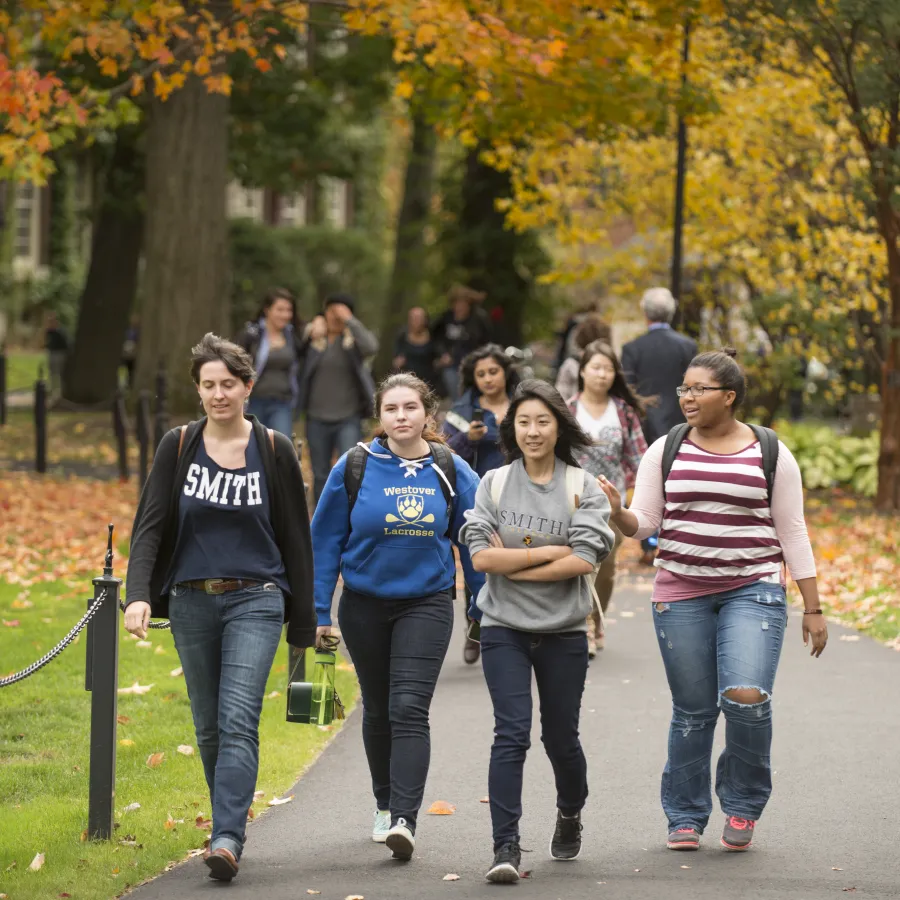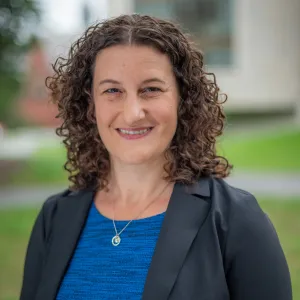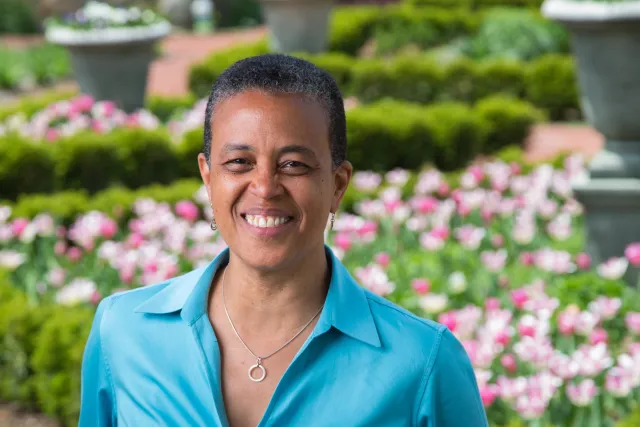Upholding Diversity
News of Note
How Smith has strengthened efforts to draw students from diverse backgrounds to campus
Published October 21, 2024
When the U.S. Supreme Court ruled last year that colleges could no longer consider racial classification as a factor in student admission decisions, leaders of Smith’s Office of Admission were disappointed, but not surprised.
They were also prepared.
“We knew that this was likely the direction the court was going to go,” says Joanna May, vice president for enrollment. “We’d thought a lot about the message the court’s decision would send to students who don’t always feel welcome at predominantly white institutions. We wanted to signal that diversity is part of our mission and important to us, and we remain committed to that goal while complying with the court’s decision.”
In the wake of the court’s decision, the admission office has worked to bolster successful student recruitment strategies, and has also launched new programs designed to further increase the diversity of Smith’s student body.
“And by that we mean geographic, socioeconomic, academic, family background, extracurricular diversity as well as racial and ethnic diversity,” notes Deanna Dixon ’88, Smith’s dean of admission. “All of those things are important to us as a community in producing a stellar learning environment.”
Preliminary enrollment data for this year are encouraging. There was no sharp decline in Black student enrollment at Smith—a trend some other selective colleges reported this fall—and no change in the enrollment of Hispanic students.
In an upward trend, Smith saw an increase in the number of lower-income students and students from the South and Southwest of the country in the 645 members of the class of 2028.
How was the college able to successfully navigate the changing admission environment? And what can Smith expect going forward?
Here’s what May and Dixon had to say about student recruitment at Smith.
What were the immediate challenges posed by the Supreme Court’s ruling outlawing race in college admissions?
Joanna May: “In the past, racial classification could be weighed in our holistic admission process. The court ruling removed racial classification as an admission factor, but we are allowed to consider a student’s lived experience, how their identities may have informed their academic or extracurricular life, essays, and recommendation letters. We were all concerned about the message students might take from the ruling, that diversity is no longer important. That is not our message at Smith.
What message did you want students to hear?
JM: “That who you are and what you bring to our campus is really important. We’re an institution founded on a mission of access and diversity for women who weren’t allowed to attend elite institutions of higher education. That’s still the heart of who we are at Smith, and we wanted to make sure students understood that.”
How was Smith able to draw a diverse entering class and avoid the precipitous drop in enrollments by students of color that some other colleges experienced?
Deanna Dixon: “One way is through the partnerships we have with college access organizations. A big one is our partnership with QuestBridge, a national organization that connects high-achieving, low-income students with selective colleges. You have to be selected to partner with QuestBridge and we’re one of about 52 institutions chosen to work with them. That was a process that happened coincidentally at the same time as the court’s decision.”
JM: “I’d say the other major factor that helped us is Smith’s investment in financial aid and the fact that we meet 100% of every student’s demonstrated need without packaging student loans. I think that really signals to students that Smith could be affordable to them, and it’s the single most important tool we have in recruiting a diverse student body. Over 80% of our applicants apply for financial aid, and 94% of Black and Hispanic students in our pool this year applied for aid. It’s very important that we have the resources to support the student body that we want.”
What other strategies did the admission office use this year to draw students of varied backgrounds to Smith?
DD: “We developed an application question that students can answer specifically for Smith. It asks students, in the context of Smith’s unique house community, ‘What personal experiences, backgrounds, or abilities would you bring to this residential environment to share with your neighbors and what would you hope your neighbors would share with you?’ The question is designed so that students can describe themselves in any number of ways, including how their racial identity has impacted their life. We’ve also heard from students who are tapping into their rural identity and their LGBTQ identity. The question has helped us to really get to know our applicant pool better.”
JM: “We dramatically increased the size of our Women of Distinction fly-in program, which funds travel to campus for students who might not otherwise have the means to do so, and highlights our many resources for first-generation college students and students of color at Smith. We used to bring about 50 students to campus through this application-based program. This past year, we brought about 125 students to campus, and I think it’s been another important recruitment tool for us.
“We’ve also just launched a new [guidance] counselor advisory board focused on diversity, equity, and inclusion. Many colleges have such boards and often they include counselors from independent schools or well-resourced public schools. We’ve specifically focused our board on counselors from college-access organizations and public schools and independent schools that have a high percentage of students of color.”
How does being a women’s college affect student recruitment?
DD: “Because of our history of educating marginalized students , women’s colleges have a reputation for being more diverse. What we want to make sure of is that we are meeting students where they are in their understanding of women’s colleges and asking ourselves, how can we reach more students of color and underrepresented students who might need to learn more about women’s colleges as a worthy option?”
JM: “Just introducing students to the concept of a liberal arts college can be a hurdle, depending on who you are trying to reach. In regions like the South and Southwest, the idea of college is tied to the state university. So, if you’re a student in Texas, what you know is the University of Texas, and if you’re in Michigan, it’s the University of Michigan. From a cost perspective, Smith can end up being more affordable to students than their in-state university because of the financial aid that we offer. So, getting that message out has been important for us in recruiting a diverse applicant pool.”
How are current students involved in the work of recruiting new Smithies?
JM: “We’ve recently made a change to our tour guide program that I think is important. In the past, being a Gold Key student guide was a volunteer position. Now, it’s a paid position on campus. Part of the motivation for doing that was to make sure that role was available to students on financial aid or those in need of a work-study job, with a conscious goal of diversifying that program as much as we can because Gold Key guides are role models for students who visit campus.”
Legal battles over the use of race in college admission are continuing. How are you feeling about the future?
DD: “Having a diverse campus community is of the utmost importance and our work on that is not done. But I think we can feel good about how we have entered this year. When you have leadership that you know understands what the work is and can talk about that with empathy, it makes a difference.”
JM: “This was hard work even before the Supreme Court decision. The ruling has definitely energized us to be creative and innovative, which I think is a strength of Smith’s. We felt an incredible amount of support from the college, and the recognition that it’s not just an admission office responsibility to recruit a diverse student body—it’s the entire institution’s responsibility.”


